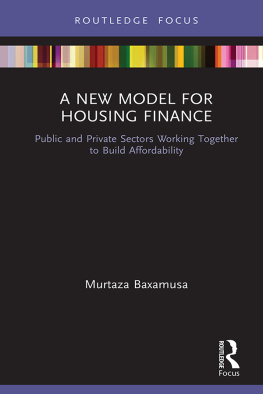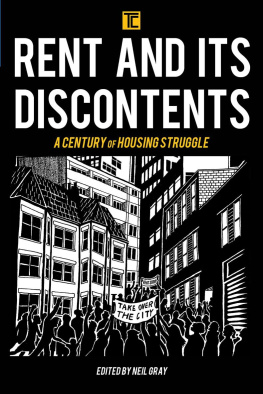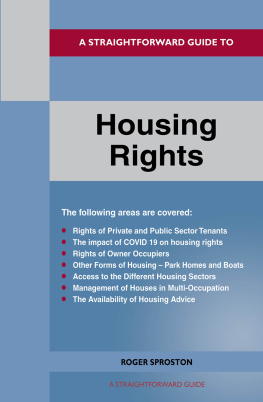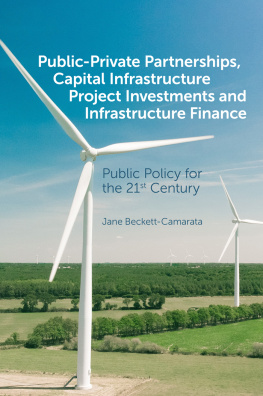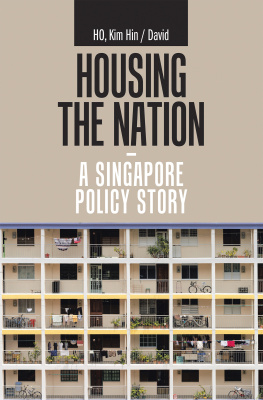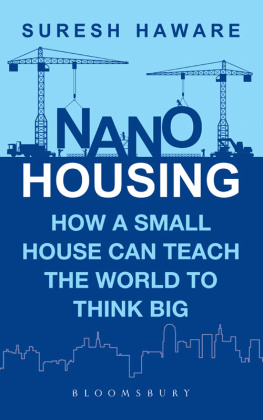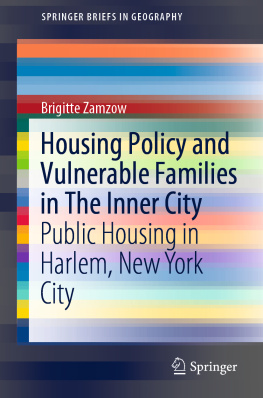A New Model for Housing Finance
A New Model for Housing Finance presents a thought-provoking solution to the housing crisis that follows the division of public and private money on housing costs and benefits. It brings a practical perspective on why housing is unaffordable, and what can be done about it using public and private capital. This book re-examines the foundation of housing finance in the United States with the aim to shift the paradigm from the public and private sectors working in silos, to working together.
Through brief yet rigorous chapters, the book assesses the policy failures of both public and private sectors by drawing attention to the continuing human impacts of this man-made crisis, finally calling for a new model of financing housing though publicprivate partnerships. The limited impact and false hope of planning interventions, as well as the widespread economic impacts of the global pandemic of 2020, demonstrate the urgent need for change in our approach to housing policy, and this book lays out a path forward. It will be of interest to anyone working in or studying housing, social justice, urban planning, urban studies, and public policy.
Murtaza Baxamusa holds a Ph.D. from the University of Southern California and has taught courses there in urban planning and social policy. As a certified planner, he has over two decades of experience in professional practice and advocacy of affordable housing and economic development for workers. He is a nationally recognized expert on community benefits agreements.
First published 2020
by Routledge
52 Vanderbilt Avenue, New York, NY 10017
and by Routledge
2 Park Square, Milton Park, Abingdon, Oxon OX14 4RN
Routledge is an imprint of the Taylor & Francis Group, an informa business
2020 Taylor & Francis
The right of Murtaza Baxamusa to be identified as author of this work has been asserted by him in accordance with sections 77 and 78 of the Copyright, Designs and Patents Act 1988.
All rights reserved. No part of this book may be reprinted or reproduced or utilised in any form or by any electronic, mechanical, or other means, now known or hereafter invented, including photocopying and recording, or in any information storage or retrieval system, without permission in writing from the publishers.
Trademark notice: Product or corporate names may be trademarks or registered trademarks, and are used only for identification and explanation without intent to infringe.
Library of Congress Cataloging-in-Publication Data
Names: Baxamusa, Murtaza, author.
Title: A new model for housing finance : public and private sectors working together to build affordability / Murtaza Baxamusa.
Identifiers: LCCN 2020010983 | ISBN 9780367859336 (hardback) | ISBN 9781003015857 (ebook)
Subjects: LCSH: Housing--Finance. | Housing policy--United States.
Classification: LCC HD7287.55 .B39 2020 | DDC 333.33/8--dc23
LC record available at https://lccn.loc.gov/2020010983
ISBN: 978-0-367-85933-6 (hbk)
ISBN: 978-1-003-01585-7 (ebk)
I am grateful to my family: Alephia, Sakeena and Nooriya for their love and support in writing this book. My daughters, Sakeena, Nooriya, and I went on innumerable road trips along Palomar Mountain and Lake Cuyamaca, in the beautiful backcountry of San Diego. As we meandered through the hills, we would see spectacular sunsets, share insightful observations, and focus our minds. These were the best moments that I will cherish long after my daughters have grown up and found their own homes.
Dr. Chang-hee Bae and Harry Richardson provided helpful feedback on my proposal and early drafts of my book chapters, and encouraged me to write this book. I also received useful suggestions from anonymous reviewers to make the books contribution more meaningful.
The ideas and insights in this book have been gleaned over two decades of researching, teaching and working in the field of public policy. The faculty and students at the University of Southern California (USC) were formative in my policy and planning education. A lot of the material in this book was developed while teaching my course on urban planning and social policy at USC. I am also a practitioner and my professional experience informed my views. I worked at a labor think-tank, Center on Policy Initiatives, that gave me an analytical perspective on workforce and community organizing. My current employer, San Diego Building Trades Family Housing Corporation is a nonprofit that owns and operates a large affordable housing project built in 19681969 by trades unions. I have also benefited in being at the front row of a lot of statewide public policy campaigns for housing affordability, being on the board of Housing California.
This book represents my personal research and opinions; it does not reflect the views of any of the organizations mentioned above. I have received no financial support from any organization for this book.
On a personal level, I am indebted to Danielle Paukner for her faith in me. Danielle has been a reliable lighthouse that has helped me navigate through these times, and I am infinitely grateful for it. Writing is a lonely journey, and Kristen Clayton, Jennifer Hunt, and Rick Bates traveled with me through it. I was also inspired by Ramla Sahid who advocates for refugees that are most vulnerable.
Finally, this book would not have been possible without Dr. Dominika (Nika) Bukalova. Nika has been guiding me on this journey at every step, from start to finish. I wish Nika the best in her own journey.
The San Diego region is a self-contained county and is a bellwether of physical and social growth for urban areas. To its south lies the Mexican border with many of its migrant workforce commuting across the busiest border crossing in the world, to live with their families in Tijuana. To its north, lies the Marine Corps Base Camp Pendleton, with one of the largest privatized military housing in the nation. To its west lies the Pacific Ocean, and to its east lies the Cleveland National Forest and the Anza-Borrego Desert, which have become environmental frontiers in conflicts over climate change, sea level rise, urban sprawl and habitat conservation.
The tension between these natural assets and human growth was captured by urban planners Donald Appleyard and Kevin Lynch in 1974 in a book that is still relevant to San Diego today, whose title is an elusive question: Temporary Paradise? In 1993, county voters approved the Forest Conservation Initiative, which preserved open space and wildlife corridors through private lands within the national forest, through a minimum lot size of 40 acres. Since the protections of the initiative were open for amendment or re-adoption a decade ago, there has been constant friction over sprawl housing projects in the courts, the board of county supervisors, and at the ballot box.
Beneath the veneer of happy sunshine is a deep history of domineering elites who turned a weak city government into a powerful machine for private wealth (Davis et al. 2005; Erie and Kogan 2011). San Diego has a checkered history of municipal corruption, antiunionism and racial disparities between the north and the south. About a quarter of its population now consists of immigrants. With the increasing share of low-wage service sector industries and the pressure from real estate speculators and growth boosters (see Karjanen 2016), it is becoming unaffordable to residents and workers. My interest in this topic began in 2001, when I was working at a labor think-tank, and computing self-sufficiency wages based on family budgets. Rental vacancy rates were low, rents rising at a rate higher than wages, and homeownership out of reach for a majority of San Diegans. There was need for 40,000 housing units in 5 years, just to meet the needs of the population growth in the city.

